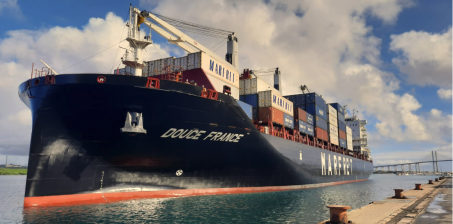Energy prices have
gone through the roof in 2022. Pump prices for petrol and diesel have never
been so high. For shipping companies, who use huge quantities of fuel and purchase
it by the tonne, the bills are becoming eye-wateringly expensive. The cost
increase is even threatening economic stability and the continued operation of
services.
Bunker prices are cyclical and subject to multiple factors. Although OPEC has always pulled the strings regarding oil prices up until now, new parameters are today blurring the lines, and will continue to do so for some time. After an unprecedented fall during the Covid crisis in 2020, prices of very low-sulphur fuel oil (VLSFO) and marine gas oil (MGO) began skyrocketing in 2021, maintaining an upward curve to establish new records. Tensions in the energy market were cranked up even further with the outbreak of the war between Russia and Ukraine. “The impact of the sudden loss of Russian supplies has exacerbated the price rise and lack of availability in an already under-supplied market,” says Neil Wiggins, bunker specialist at Marfret.
Bunkering – Top of the costs table
On 8th of
March last, the barrel of crude was at $129. “The tonne of MGO was over the
$1300 dollar mark. Low-sulphur fuel was at $1000 per tonne. The cost of bunker
fuel reached such a level that it became the largest cost item for Marfret,
overtaking chartering and social contributions,” highlights marine superintendent
Charles Gauthier. This trend is likely to increase with the recent unavailability
of Russian VLSFO.
The bunker adjustment factor (BAF) charged to forwarding agents and shippers has helped to redress the balance by smoothing out or even cancelling out the variations. The cost increases vary by line, depending on fuel consumption and distances covered. “These higher prices are here to stay and will have an impact on freight rates, especially to French overseas territories,” warns Marfret managing director Guillaume Vidil.
Volatility and uncertain availability
Price volatility has a direct impact on a line’s financial equilibrium. “For example, we asked for a gas-oil price a few weeks back. In the morning, we were quoted US$1300 a tonne, but this had fallen to under $1100 a tonne just a few hours later (same supplier, same port, same delivery date) on the announcement of a possible ceasefire in Ukraine. These types of fluctuation in an uncertain market are becoming a daily occurrence. The impact on the cost per TEU for freight carried on our ships can be huge, both positive and negative,” explains Wiggins. This price volatility also affects fuel availability, with suppliers no longer taking advance orders. The market nervousness is undermining line operations, since bunkering is carried out during commercial operations. Currently, fuelling orders are being placed at extremely short notice, a few days before port call, with potential delays if the bunkering does not take place at the same time as offloading/loading operations.
While French hauliers have been granted a €400M aid package to offset fuel cost increases, nothing has been planned for shipping companies…

